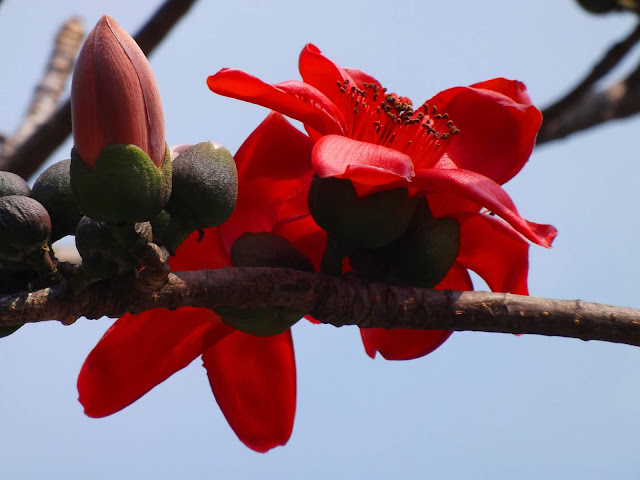Shomudro joba or Sea hibiscus, Talipariti tiliaceum
Shomudro joba or Sea hibiscus (Talipariti tiliaceum, family: Malvaceae) is a small bushy tree with many branches and nice curved canopy, attaining a height of 12-13 m. Trunk is grey with many reddish spots. Its roots do not go deep into the soil.
It is found in the coastal regions of Bangladesh. The evergreen plant is also found throughout the tropical and subtropical sea beaches of the world. It is salt-tolerant and can grow in water logging condition and on coral sands.
Other names : Bhola, Bela, Bola, Chhelba (Bangla), Beach hibiscus (Eng.)
Leaves are cordate with long petiole (up to 10 cm long); soft green in color, whitish green, tomentose below, alternate, coriacious, slightly dented, apex pointed, 8-15 cm long and 8-14 cm wide.
Flowers are large, bisexual, 4-6 cm wide, eye-catching, beautiful, almost like Porosh pipul (Thespesia populnea). They are solitary, axillary or terminal, funnel-shaped, yellow with blackish mark at the centre.
It blooms in the morning but in the afternoon, it changes to orange or reddish color and fall down at this time. Petals 5, sepals 5, a 5-lobbed acute cup. Fruit a capsule, globose, brownish, dehiscent. Seeds 5 or more.
The fast-growing tree is propagated by seeds, cuttings and air-layering.
The inner bark yields a dark fibre which is used to make ropes and cordages by the inhabitants of the coastal regions of the subcontinent. The fibres are more resistant to water than Jute. Its wood as fuel is quite good. Leaf, flower, bark are used in cough, fever, ear infection, dysentery.







The pics are taken from Chheradip, Saint Martin islands, the last territory of Bangladesh.
ReplyDelete1E7F6718FC
ReplyDeletekiralık hacker
hacker arıyorum
belek
kadriye
serik